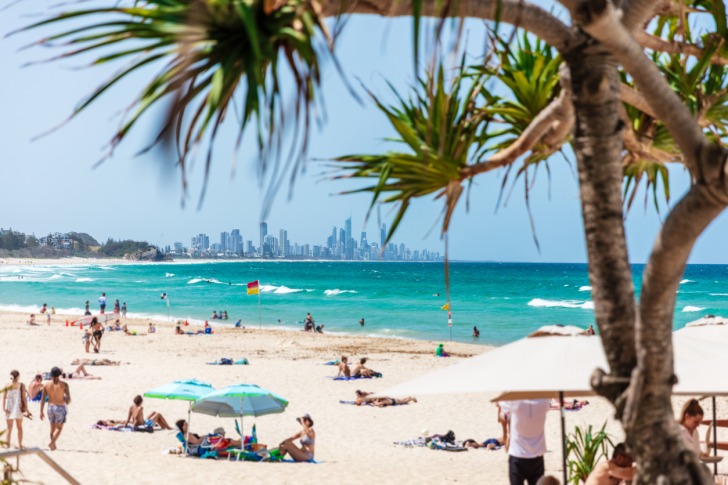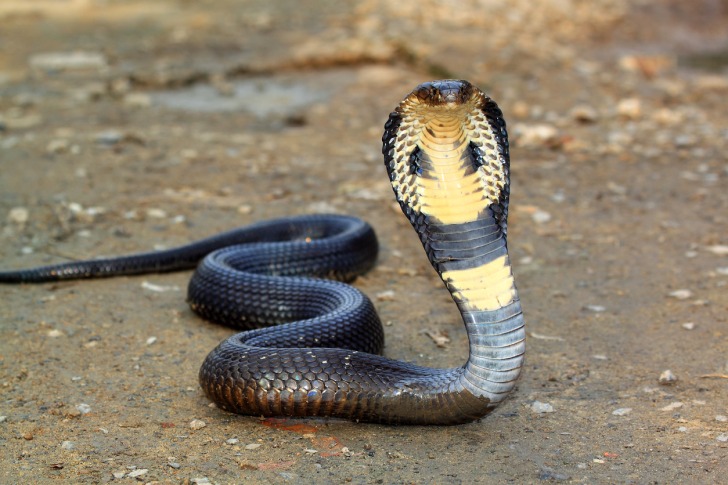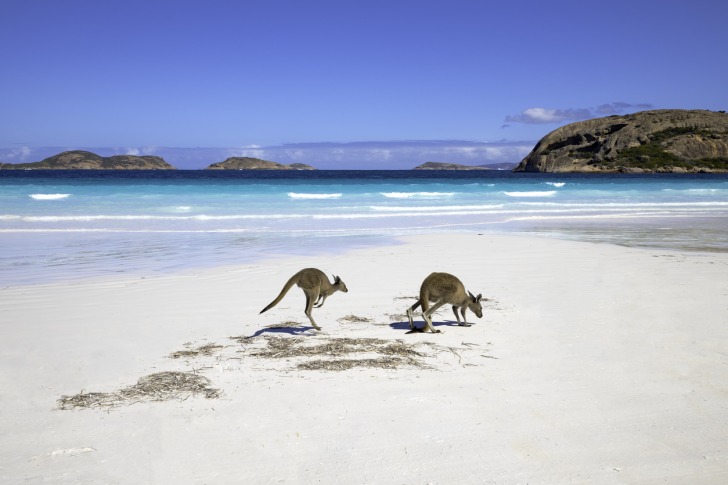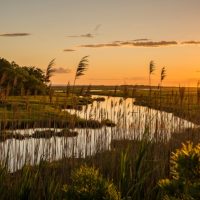Australia, often hailed for its breathtaking landscapes and unique wildlife, has also earned a notorious reputation for being home to some of the world’s most venomous snakes.
The Land Down Under, with its diverse ecosystems, harbors an array of snake species, captivating and potentially dangerous.
That can make heading out into the open country a more dangerous proposition.
In this article, we will delve into the heart of the snake-related mysteries in Australia, offering insights into the presence of snakes, their species, safety concerns, interesting facts, and essential tips for nature enthusiasts.

Contents
Are There Snakes in Australia?
Yes, Australia is indeed a snake haven.
With approximately 140 species of land snakes and 32 sea snakes, the continent boasts one of the highest snake diversities globally.
Among these, the inland taipan holds the title of the world’s most venomous snake, injecting a potent blend of neurotoxins that can be fatal to humans.
While snakes inhabit various terrains, from dense forests to arid deserts, encounters with them are relatively rare in urban areas.
However, the omnipresence of snakes in the wild demands vigilance when venturing into the Australian landscape.
If you are intending to travel away from populated areas and into the desert or forest, it is advised that you travel with a knowledgeable guide.
This person can help you avoid a serious accident.
They will also know what to do should something happen.
While it is rare if you are dressed appropriately and take the necessary precautions, this will lower the risk of a deadly encounter with a snake in Australia.
Many people who thought they were knowledgeable enough to handle this terrain and the snakes and other animals that inhabit it have found themselves in dangerous situations.
Caution and preparation are the watchwords here.
Snake Species in Australia
Australia is home to a plethora of snake species, each with its unique characteristics.
The Eastern Brown Snake, Coastal Taipan, and Inland Taipan are some of the venomous species found on the continent.
The majority of Australian snakes are non-venomous, playing crucial roles in maintaining ecological balance by controlling rodent populations.
While urban areas may not witness frequent snake encounters, it is vital to be aware of one’s surroundings, especially in regions where these reptiles thrive.
That is why it is especially important to travel into the desert or the forest with a guide.
Is it Safe to Go on a Trek in Australia?
Exploring the Australian wilderness is an exhilarating experience, but it comes with its share of risks.
Snakes are just one element of the diverse ecosystem that can pose a threat.
Other dangers include encounters with aggressive wildlife like kangaroos or spiders, navigating rough terrain, and dealing with unpredictable weather conditions.
To ensure a safe trek, it is crucial to be well-prepared, wear appropriate clothing, carry essential supplies, and have a basic understanding of first aid.
While snakes are a concern, a holistic approach to safety will enhance the overall hiking experience.
Your guide will help you understand the steps that you need to take to keep yourself safe so that you can enjoy the beautiful scenery and varied scenery that Australia has to offer.

Interesting Snake Facts in Australia
Australia’s snake myths and legends are as captivating as its wildlife.
Even in regions where snakes are rare, tales of mythical serpent creatures have persisted through generations.
From Aboriginal Dreamtime stories to modern urban legends, the intrigue surrounding snakes has become ingrained in the cultural fabric.
Separating fact from fiction, however, is essential for fostering a better understanding of these creatures and dispelling unnecessary fears.
This is where a knowledgeable guide or naturalist can help.
They can help you understand the realities of life in Australia and separate fact from fiction.
3 Safety Tips for Exploring Nature in Australia
- Stay on Designated Trails: Stick to marked paths and trails to minimize the risk of encountering snakes or other hazards. Straying into uncharted territories increases the likelihood of stumbling upon wildlife and unfamiliar terrain. Again, traveling with a guide is the best way to stay safe while allowing you to enjoy the scenery. They will show you where it is safe to hike and what you should look out for before you head out. This is essential information when you are in unfamiliar territory.
- Wear Appropriate Clothing: Long pants, sturdy boots, and gaiters can provide an added layer of protection against snake bites. Avoiding sandals or open-toed shoes reduces the risk of venomous snake fangs reaching your skin. The boots should be heavy, and the pants should reach over the tops of them. Your guide may even suggest that you wear a long-sleeved shirt and a hat for additional protection from the sun and insects.
- Carry a First Aid Kit: A well-equipped first aid kit is essential for any outdoor adventure. Include items like bandages, antiseptic wipes, and a compression bandage to treat snake bites promptly. Understand how to use the items in the first aid kit before you travel anywhere. Your tour guide should also have a first aid kit with them. Heading into the outback or even the forest can present several challenges. Being prepared is an essential part of adventuring in the outdoors.
Australia’s wilderness is a captivating but potentially hazardous playground.
While snakes add a layer of complexity to outdoor activities, being informed and prepared significantly reduces the associated risks.
As mentioned, animals and insects are one part of the equation.
There are also rocks and unstable terrain.
Any one of these can lead to an accident.
But don’t let that stop you from heading out.
Appreciating the beauty of Australia’s natural wonders while respecting its wildlife is key to a safe and enriching experience.
Precaution, a knowledgeable guide, and some common sense are key to making your journey unforgettable.
Australia Safety Overview
READ THE FULL REPORT: Australia Safety Review
Safety Index:
- OVERALL RISK: LOW
- TRANSPORT & TAXIS RISK: MEDIUM
- PICKPOCKETS RISK: LOW
- NATURAL DISASTERS RISK: HIGH
- MUGGING RISK: LOW
- TERRORISM RISK: LOW
- SCAMS RISK: LOW
- WOMEN TRAVELERS RISK: LOW
Frequently Asked Questions
How many people die every year from snake bites in Australia?
Fatalities from snake bites are relatively low in Australia, averaging about two deaths each year.
However, prompt medical attention is crucial in the event of a snake bite, as some species carry potent venom.
Are all snakes in Australia venomous?
No, not all snakes in Australia are venomous.
The majority of snake species in the country are non-venomous.
However, it is essential to exercise caution and identify the specific snake encountered to assess potential risks accurately.
Can snakes be found in urban areas of Australia?
While encounters with snakes are less common in urban areas, they are not unheard of.
Snakes may occasionally venture into gardens or residential areas, especially during warmer months.
It is important to be cautious and seek professional assistance in case of snake sightings.











